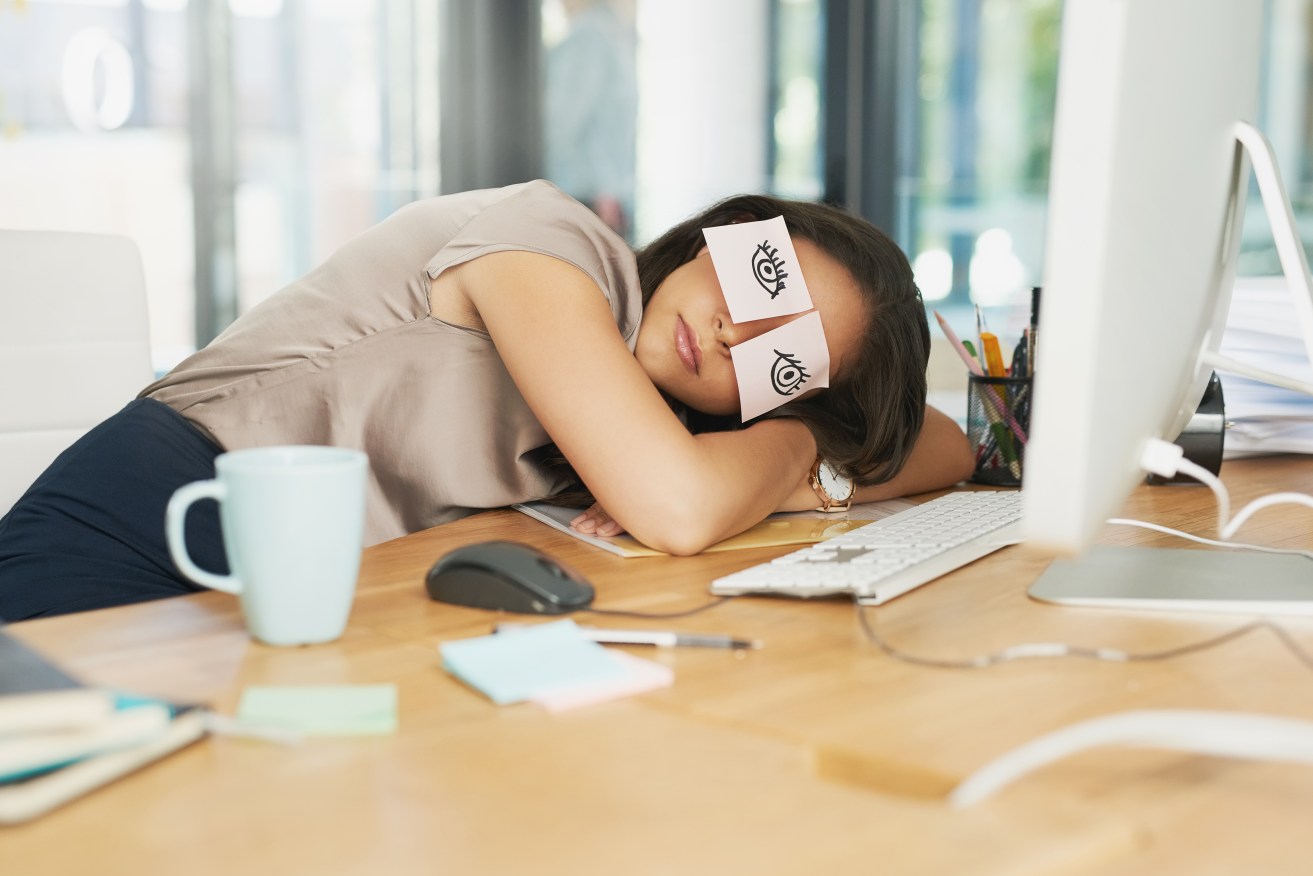The do and don’t of healthy napping: It’s all about the sweet spot


Helpful hint: Instead of napping at your work station, bring some blackout curtaining from home and make a tent under the desk. Photo: Getty
Taking a nap at work may lead your boss or colleague at the neighbouring desk to gently ask: What the hell are you doing?
You might point out that an afternoon slump in focus and energy isn’t something you’d planned on.
It’s a common phenomenon, the slump. And it’s probably a hangover from when humans had a biphasic sleep pattern… which translates to sleeping in two shifts.
You could point out: “If this was Spain, we’d all be taking afternoon naps…”
That may not be a winner.
A more persuasive argument
Apart from giving you an energy boost and a dose of alertness, a nap improves a number fo cognitive functions, including an enhancement of executive functioning.
Executive function and self-regulation skills are the mental processes “that enable us to plan, focus attention, remember instructions, and juggle multiple tasks successfully”.
A nap also serves to stabilise one’s mood. (Who hasn’t turned into a whingeing toddler when suddenly tired?)
Naps have also been found to improve memory and speed and accuracy of performance.
Research published in June found that people “who habitually took daytime naps had brains that were larger by a volume equivalent to 2.6 to 6.5 years of ageing compared to people who didn’t nap.
So … go the nap! But do note: naps are best taken in the early afternoon, between 1pm and 3pm.
Naps are best in small doses
The standard advice is to keep naps short. But how short?
In 1995, a study from NASA concluded that a 26-minute nap would improve performance by 34 per cent and alertness by 54 per cent.
In 2011, following a series of close-calls when air traffic controllers fell asleep on the job, they were advised to take 26 minute naps.
Most experts seem to advise 20 to 30 minutes as being the optimal time.
The Mayo Clinic goes shorter, advising 10 to 20 minutes, the classic power nap.
Why is shorter better?
Because the longer you nap, the less refreshed you’ll feel coming out of it. if fact, you’re likely to suffer grogginess.
This is a consequence of what’s known as sleep inertia, which is counter productive and wrecks any benefit you might have gleaned from the nap.
According to the Centres for Disease Control, sleep inertia is a temporary disorientation and decline in performance and/or mood after awakening from sleep.
Sleep inertia “typically can last from 30 to 60 minutes, but researchers have observed it lasting two hours”.
People in the trance of sleep inertia can show slower reaction time, poorer short-term memory and slower speed of thinking, reasoning, remembering, and learning.
These are things you don’t want to be known for in the workplace, or when driving.
Napping for older people: a mixed bag
This is a tricky one.
A 2010 study suggests that napping may enable older people to “lead a fully active life by giving them enough energy to take part in recreational and social activities”.
There is evidence that older people who take 30- to 90-minute naps experience benefits to their brain health and cognition.
In a 2021 study, afternoon nappers aged 60 and older did better on tests for mental agility, including better word recall, compared to those who didn’t nap.
These naps, for older people, were 30 to 90 minutes long.
Longer naps, though, compromised the ability to think and form memories. And studies suggest that frequent excessive napping may be an early sign of dementia. See here and here.
Serious risk for people of all ages
Excessive napping may be an indicator of poor sleep at night, or of more serious conditions such as sleep apnea.
A study published in April 2016 found that naps lasting more than 60 minutes a day increased the risk of type 2 diabetes by 50 percent.
There was also an increased risk of metabolic syndrome by 50 percent.
Another study found that naps longer than an hour significantly increased the risk of cardiovascular disease, by 82 percent.
Were naps to blame? It’s more likely they indicated people’s energies were being drained by these underlying issues.








